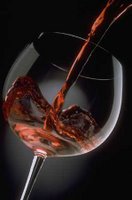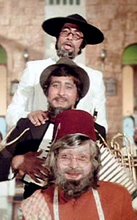
Oskar Schindler was the famous German factory owner who saved the lives of over 1,400 Jews during World War II. Thomas Kenneally wrote a book about him that won the Booker Prize, and Steven Spielberg made it into a movie - Schindler's List, which won him great critical acclaim and many awards, including the Oscar for Best Director and for Best Film.
My favourite scene in the film is where we are first introduced to Oskar. Watching it again recently, I noticed something I hadn't before - Oskar's expensive taste in wine. The relevant sequence is as follows:
At a restaurant ordering for his table (full of new friends he has made that evening), he asks the maître d', "Tell me about your cellar."
The maître d' says, "I have an excellent German Riesling. 1937."
But Oskar is unimpressed. "French. Bordeaux? Chateau Latour? 28? 29?" The maître d' shrugs apologetically.
Spielberg cuts to another conversation at the table. Five seconds later, we return to Oskar.
"The Margaux 29? Burgundy then? Romanée-Conti 1937?"
Oskar wants a French red wine, while he is being offered a German white. But he is not merely asking for a French red, he is asking for the most prestigious and expensive red wines in the world.
A bit of history. To decide what the best wines in the country were, the French introduced a rating system for wines in 1855 known as the Bordeaux Wine Official Classification. Wines were divided into five categories, the premier cru (first growth) representing the finest, and then downwards to the cinquieme cru (fifth growth). Only four red wines were given premier cru status, and the original list had not changed the evening Oskar ordered red wine at the restaurant. (The premier cru list has been only amended once, and that was when a fifth wine was added in 1973).
The four red wines awarded premier cru status in 1855 were:
1. Chateau Lafite-Rothschild
2. Chateau Latour
3. Chateau Margaux
4. Chateau Haut-Brion
Now we hear Oskar asking for Chateau Latour and Chateau Margaux. Since there is a gap of a few seconds in between, it is possible he asked for the others as well. It is in my view most likely that Schindler would have asked for the Haut-Brion, but not the Lafite-Rothschild. This is because the latter was, as indicated by the name, owned by the Rothschilds, a famous Jewish banking family. Given it was German Army officers he was entertaining, the Rothschild would have looked out of place and possibly objectionable on the dining table. This view [that Schindler would have not asked for the Rothschild] is somewhat supported by the fact that we don't actually hear him ask for it, though we hear him ask for 2 of the other 3 premier crus.
Finally, unable to get a premier cru, he asks for a Burgundy. The Burgundy region has its own distinct rating hierarchy for wines, and the Romanee-Conti, sure enough, rests at the top of this.
But the restaurant, not surprisingly, has none of these exclusive wines, and we do not know what Schindler eventually settles for. But we are plenty impressed by what he asks for.
